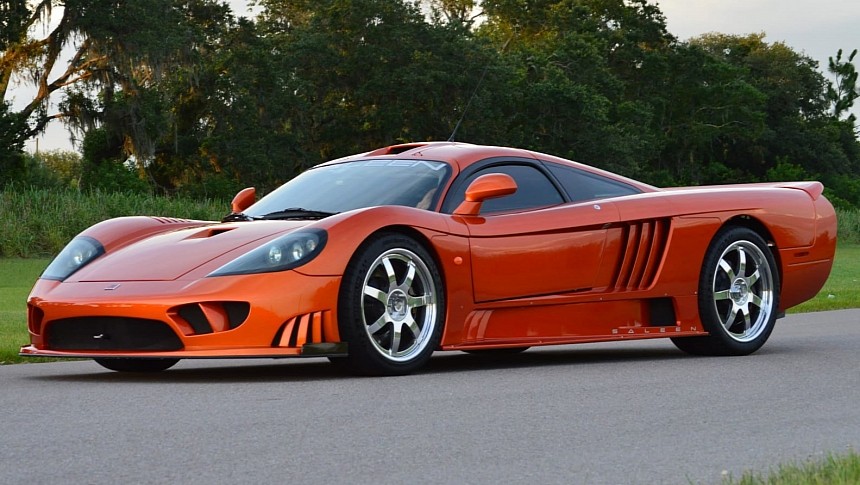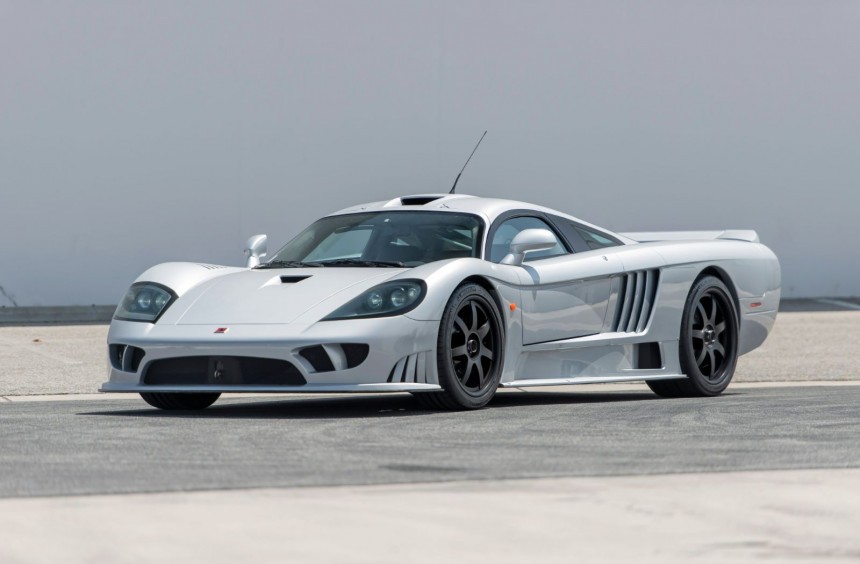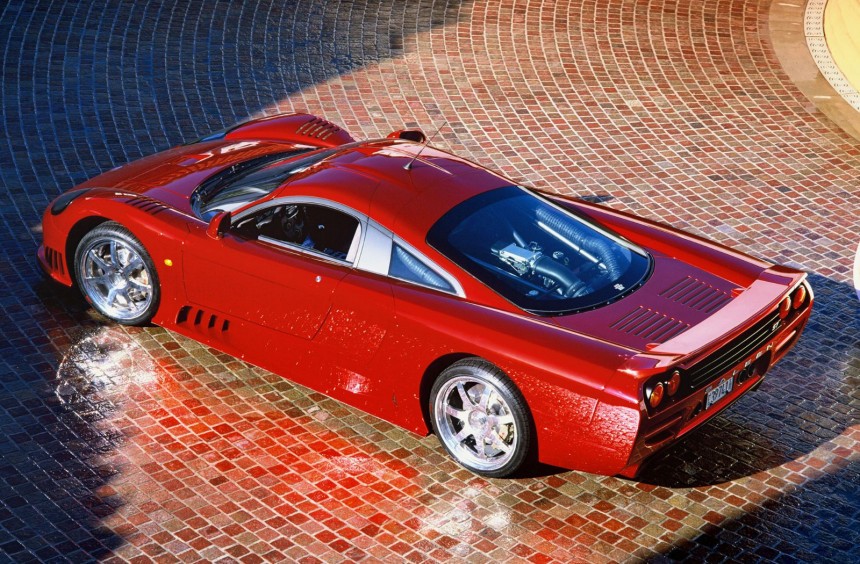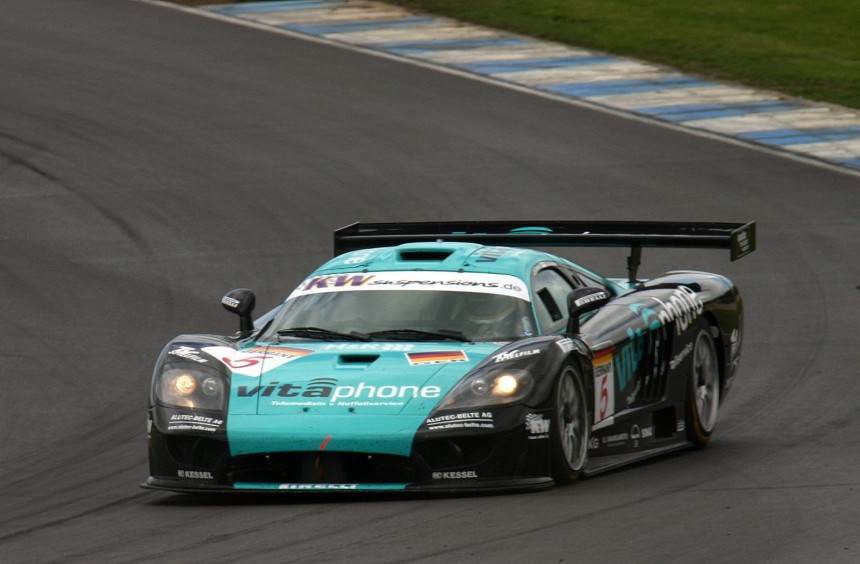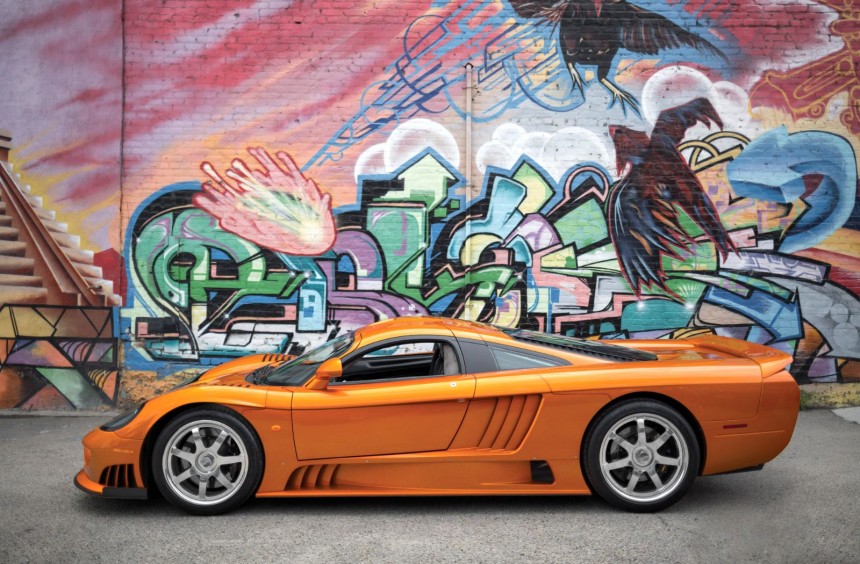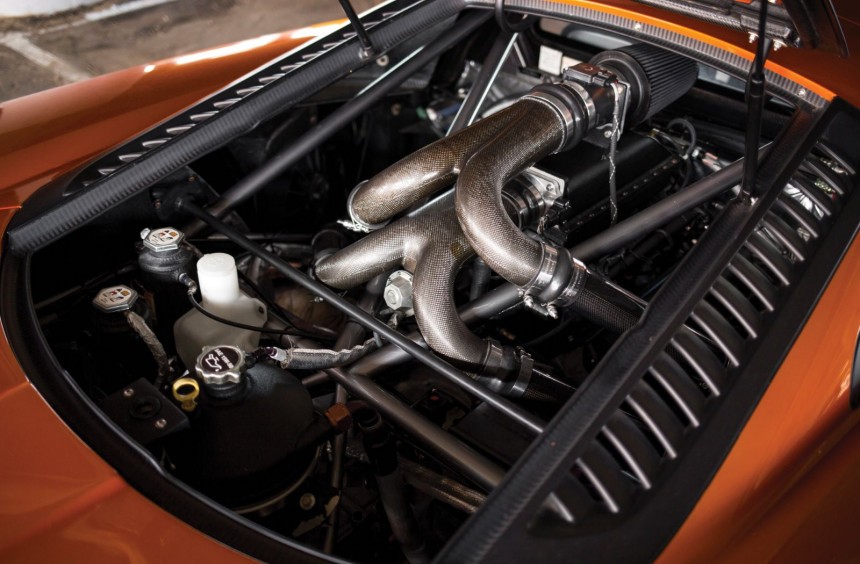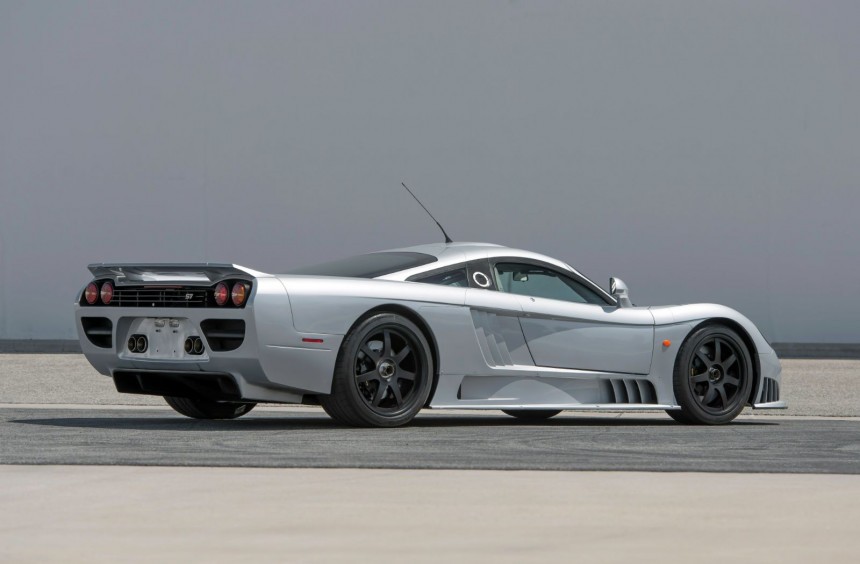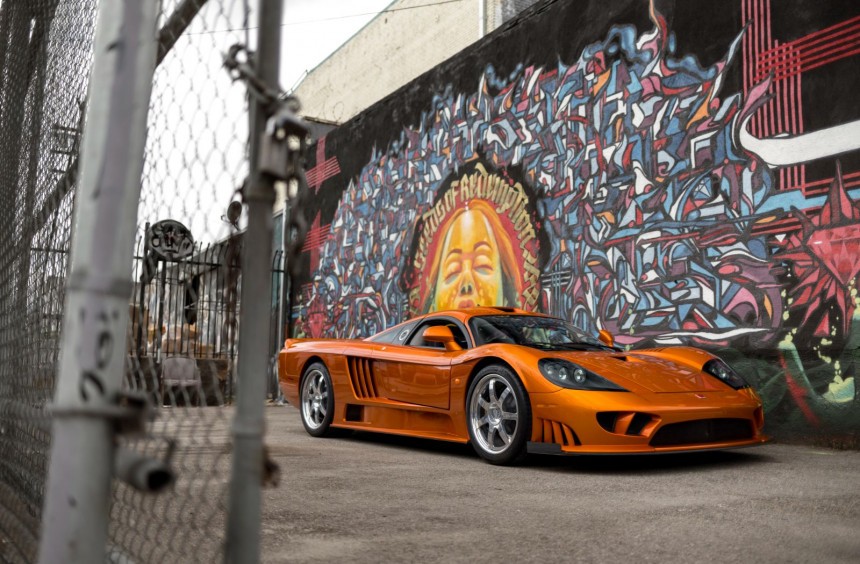Unfairly forgotten these days, the S7 was not just a breathtaking, highly original American road-legal supercar that could rival Europe's finest but also a legitimate race car that racked up an impressive number of wins.
These days, when enthusiasts talk about the greatest supercars built in the US during the last three decades, the conversation usually revolves around the Ford GT and Dodge Viper.
While those two are unquestionably two supercar heavyweights, they are not America's only modern high-performance supercar legends.
Often omitted from the conversation but by no means inferior in any way, shape, or form, the Saleen S7 deserves to be in that conversation.
So, in this article, we'll take a detailed look at this forgotten legend and remember why it's one of the greatest supercars ever built.
The story of the S7 starts with Steve Saleen, a former race driver who established Saleen Autosport (later Saleen, Inc. ) in 1983.
In just a few years, the California-based company gained nationwide recognition for modding Fox-body Mustangs. Eventually, Saleen became a legitimate original equipment manufacturer (OEM) that sold complete, highly-tuned rides based on Ford's popular pony car.
Steve Saleen also raced in house-developed Mustangs in the Sports Car Club of America (SCCA) Endurance Series, where his company won several championships during the late 1980s and 1990s.
Even more impressive, Steve and his team took two Mustangs to Le Mans in 1997, marking the model's return to the world's most famous race after a 30-year hiatus.
Unfortunately, both cars had to retire with mechanical issues, but this gave Steve time to admire the F1 GTR challengers of pit lane neighbors McLaren and pick the brains of its engineers.
Soon after returning from France, Steve began to consider a new project: building an American supercar that could be just as impressive as the iconic McLaren on both the road and the track.
Less than two years later, the project was in full swing, and unlike the Saleen 'Stangs, the supercar was developed from scratch.
During the second part of the 1990s, several carmakers attempted to build a supercar that could dethrone the McLaren F1. The only one who succeeded was Mercedes-Benz with their CLK GTR.
During the early development stages, Mercedes actually sourced a race-spec F1 GTR and used it as a test mule for its body panels.
Over the Atlantic, Saleen opted for a different approach. Though inspired by the McLaren F1 - as evidenced by several styling cues such as the front and rear ends, the American mid-engine supercar was developed without building a physical prototype.
Instead, the company extensively used computer-aided design (CAD) software and only built a scaled-down clay model for wind tunnel tests.
With the help of British motorsport experts Ray Mallock Ltd., who played a crucial part in chassis development, the first pre-production car was fired up and ready for testing less than a year after the project officially commenced.
Dubbed S7, the car was unveiled at the Monterey Historic Races on August 19, 2000 - a day that coincided with the 27th anniversary of Steve's first-ever race win.
Unlike most supercar manufacturers that produce the street version and then take it to the track, the Saleen S7 made its race debut nearly two years before a road-going example was delivered to its lucky customer.
Though it didn't finish its maiden race, the S7-R (where "R" stands for racing) went on to win 78 races throughout its career.
Arguably, its most famous race win came in 2004 when the S7-R beat Ferrari on its own turf at Imola in the eighth round of the FIA GT championship.
During that race, the American supercar also defeated overwhelming favorites Maserati and their new MC12 GT1 - a Ferrari V12-powered race car loosely based on the road-going Enzo Ferrari.
In over a decade of motorsport involvement, the S7-R racked up ten GT championships worldwide and won the GT1 class at Le Mans in 2010.
These achievements would be impressive for any established manufacturer's flagship model, but remember that the S7 was the first car developed from scratch by what started out as an American Mustang tuner.
Surprisingly, the S7 wasn't built around a state-of-the-art monocoque but rather an old-school-style space-frame chassis.
However, the structure co-developed and optimized by Ray Mallock in England was designed and constructed using modern tech.
To improve rigidity and keep it as light as possible, the structure was fabricated using 4130 Chromoly steel, aluminum, and received composite honeycomb supporting panels.
On the other hand, the bodywork designed by Phil Frank was built entirely out of carbon fiber and benefited from extensive wind tunnel testing.
Though it ended up looking amazing, the body was designed to be as aerodynamically efficient as possible. Therefore, the fifty or so scoops and vents all served a purpose and were not just style-enhancing additions.
Moreover, the shape of the S7's elongated tail was designed to act like an inverted wing, which is why the road version didn't receive a massive rear spoiler.
Tipping the scales at 2,865 pounds (1,300 kg) dry, the supercar generated an amount of downforce roughly equal to its weight, making it extremely fast yet responsive, even in wingless, road-legal form.
For the heart of this American beast, Saleen opted for the legendary Ford Windsor small-block V8. However, the entire unit was comprehensively redesigned for serious power.
Though loosely based on the iconic Windsor, the engine block was recast using aluminum alloy, strengthened in all the right areas, and enlarged to 7.0 liters (427 ci) - hence the 7 in the car's name.
Paired with a six-speed manual, the SOHC V8 was equipped with a series of high-tech, race-ready components such as a billet steel crankshaft and conrods, forged aluminum pistons, CNC-ported heads with 11.0:1 compression-ratio chambers, a bespoke water pump, and a dry-sump lubrication system.
Initially, it was rated at 550 hp and 560 lb-ft (759 Nm) of torque, which made it one of the most powerful naturally-aspirated supercar engines of the early 2000s.
However, the 2002 introduction of the 651-hp Enzo Ferrari persuaded Saleen to develop a version that would turn the S7 into a Ferrari beater.
Released in 2005 on what became known as the S7TT, the engine was upgraded with a carbon fiber intake and twin Garrett turbochargers that enabled it to make 750 hp and 700 lb-ft (949 Nm) with only 5.5 psi (0.38 bar) of boost and no intercoolers.
If that wasn't enough, Saleen began offering the Competition Package in 2006. When outfitted with this package, the S7TT's V8 could deliver 1,000 hp.
In naturally aspirated guise, the custom V8 could propel the S7 to 60 mph (97 kph) from a standstill in 3.6 seconds. Even more impressive, the supercar could run the quarter mile in 11.4 seconds, and the company claimed it could attain an estimated top speed of 220 mph (354 kph).
When equipped with the twin-turbo engine, the 0-to-60 time improved to 2.9 seconds, while quarter-mile runs yielded mid-10-second times.
When equipped with the Competition Package, the S7TT performance figures became even more insane. It was reportedly capable of under-10-second quarter-mile runs and a top speed bordering 250 mph (402 kph).
Regardless of the engine configuration, the S7 was one of the fastest cars of the 2000s, but it also handled impeccably on any road or track.
The S7, S7TT, and S7-R were built from 2000 to 2009, with overall production never exceeding 100 units.
In 2017, the company attempted to revive the model by announcing an improved version capable of making 1,300 hp on pump gas and 1,500 hp on E85 race fuel.
Unfortunately, the new hypercar dubbed S7-LM (Le Mans) never entered an actual production run, but seven existing units were converted to LM specs.
Even though only 15 years have passed since the last unit was built, the S7 has slid into anonymity. Save for hardcore enthusiasts; few car people remember this fantastic machine and even fewer know how good it was.
A tuning company's first swing at developing a car from scratch, the S7 became one of the most successful race cars of the 2000s and one of the most impressive supercars ever built.
So, the next time someone says that, apart from the Ford GT and Dodge Viper, America didn't build a supercar that was great on both road and track, remind them of the iconic Saleen S7.
For a virtual tour of this forgotten legend, we recommend watching the YouTube video below by the one-and-only Doug DeMuro.
While those two are unquestionably two supercar heavyweights, they are not America's only modern high-performance supercar legends.
Often omitted from the conversation but by no means inferior in any way, shape, or form, the Saleen S7 deserves to be in that conversation.
So, in this article, we'll take a detailed look at this forgotten legend and remember why it's one of the greatest supercars ever built.
From modded Mustangs to an all-new supercar
In just a few years, the California-based company gained nationwide recognition for modding Fox-body Mustangs. Eventually, Saleen became a legitimate original equipment manufacturer (OEM) that sold complete, highly-tuned rides based on Ford's popular pony car.
Steve Saleen also raced in house-developed Mustangs in the Sports Car Club of America (SCCA) Endurance Series, where his company won several championships during the late 1980s and 1990s.
Even more impressive, Steve and his team took two Mustangs to Le Mans in 1997, marking the model's return to the world's most famous race after a 30-year hiatus.
Unfortunately, both cars had to retire with mechanical issues, but this gave Steve time to admire the F1 GTR challengers of pit lane neighbors McLaren and pick the brains of its engineers.
Soon after returning from France, Steve began to consider a new project: building an American supercar that could be just as impressive as the iconic McLaren on both the road and the track.
Less than two years later, the project was in full swing, and unlike the Saleen 'Stangs, the supercar was developed from scratch.
Built in less than a year, without developing a single prototype
During the early development stages, Mercedes actually sourced a race-spec F1 GTR and used it as a test mule for its body panels.
Over the Atlantic, Saleen opted for a different approach. Though inspired by the McLaren F1 - as evidenced by several styling cues such as the front and rear ends, the American mid-engine supercar was developed without building a physical prototype.
Instead, the company extensively used computer-aided design (CAD) software and only built a scaled-down clay model for wind tunnel tests.
With the help of British motorsport experts Ray Mallock Ltd., who played a crucial part in chassis development, the first pre-production car was fired up and ready for testing less than a year after the project officially commenced.
Dubbed S7, the car was unveiled at the Monterey Historic Races on August 19, 2000 - a day that coincided with the 27th anniversary of Steve's first-ever race win.
A race car first
Though it didn't finish its maiden race, the S7-R (where "R" stands for racing) went on to win 78 races throughout its career.
Arguably, its most famous race win came in 2004 when the S7-R beat Ferrari on its own turf at Imola in the eighth round of the FIA GT championship.
During that race, the American supercar also defeated overwhelming favorites Maserati and their new MC12 GT1 - a Ferrari V12-powered race car loosely based on the road-going Enzo Ferrari.
In over a decade of motorsport involvement, the S7-R racked up ten GT championships worldwide and won the GT1 class at Le Mans in 2010.
These achievements would be impressive for any established manufacturer's flagship model, but remember that the S7 was the first car developed from scratch by what started out as an American Mustang tuner.
Old-school chassis design combined with modern aerodynamics
However, the structure co-developed and optimized by Ray Mallock in England was designed and constructed using modern tech.
To improve rigidity and keep it as light as possible, the structure was fabricated using 4130 Chromoly steel, aluminum, and received composite honeycomb supporting panels.
On the other hand, the bodywork designed by Phil Frank was built entirely out of carbon fiber and benefited from extensive wind tunnel testing.
Though it ended up looking amazing, the body was designed to be as aerodynamically efficient as possible. Therefore, the fifty or so scoops and vents all served a purpose and were not just style-enhancing additions.
Moreover, the shape of the S7's elongated tail was designed to act like an inverted wing, which is why the road version didn't receive a massive rear spoiler.
Tipping the scales at 2,865 pounds (1,300 kg) dry, the supercar generated an amount of downforce roughly equal to its weight, making it extremely fast yet responsive, even in wingless, road-legal form.
Powered by a mighty V8 loosely based on a legendary Ford small-block
Though loosely based on the iconic Windsor, the engine block was recast using aluminum alloy, strengthened in all the right areas, and enlarged to 7.0 liters (427 ci) - hence the 7 in the car's name.
Paired with a six-speed manual, the SOHC V8 was equipped with a series of high-tech, race-ready components such as a billet steel crankshaft and conrods, forged aluminum pistons, CNC-ported heads with 11.0:1 compression-ratio chambers, a bespoke water pump, and a dry-sump lubrication system.
Initially, it was rated at 550 hp and 560 lb-ft (759 Nm) of torque, which made it one of the most powerful naturally-aspirated supercar engines of the early 2000s.
However, the 2002 introduction of the 651-hp Enzo Ferrari persuaded Saleen to develop a version that would turn the S7 into a Ferrari beater.
Released in 2005 on what became known as the S7TT, the engine was upgraded with a carbon fiber intake and twin Garrett turbochargers that enabled it to make 750 hp and 700 lb-ft (949 Nm) with only 5.5 psi (0.38 bar) of boost and no intercoolers.
If that wasn't enough, Saleen began offering the Competition Package in 2006. When outfitted with this package, the S7TT's V8 could deliver 1,000 hp.
Mind-blowing performance
When equipped with the twin-turbo engine, the 0-to-60 time improved to 2.9 seconds, while quarter-mile runs yielded mid-10-second times.
When equipped with the Competition Package, the S7TT performance figures became even more insane. It was reportedly capable of under-10-second quarter-mile runs and a top speed bordering 250 mph (402 kph).
Regardless of the engine configuration, the S7 was one of the fastest cars of the 2000s, but it also handled impeccably on any road or track.
Unfairly forgotten
In 2017, the company attempted to revive the model by announcing an improved version capable of making 1,300 hp on pump gas and 1,500 hp on E85 race fuel.
Unfortunately, the new hypercar dubbed S7-LM (Le Mans) never entered an actual production run, but seven existing units were converted to LM specs.
Even though only 15 years have passed since the last unit was built, the S7 has slid into anonymity. Save for hardcore enthusiasts; few car people remember this fantastic machine and even fewer know how good it was.
A tuning company's first swing at developing a car from scratch, the S7 became one of the most successful race cars of the 2000s and one of the most impressive supercars ever built.
So, the next time someone says that, apart from the Ford GT and Dodge Viper, America didn't build a supercar that was great on both road and track, remind them of the iconic Saleen S7.
For a virtual tour of this forgotten legend, we recommend watching the YouTube video below by the one-and-only Doug DeMuro.
